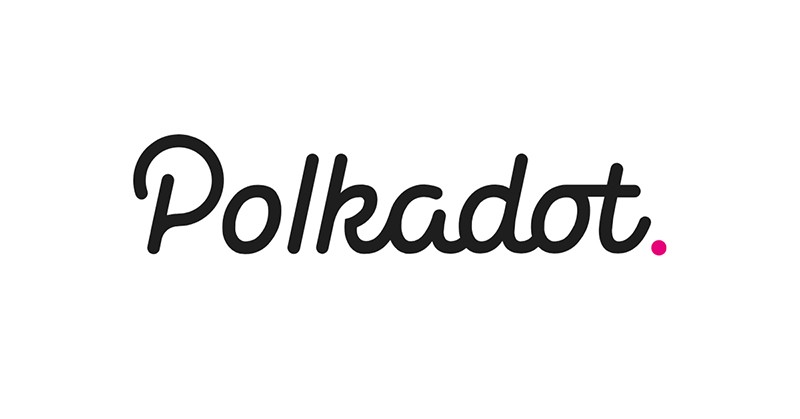Polkadot is a multi-chain network that aims to connect different blockchains into a single, interoperable ecosystem. The DOT coin is the native token of the Polkadot network and serves various purposes, such as staking, bonding, and governance. It allows holders to participate in network security and decision-making processes. With a focus on scalability, security, and compatibility, Polkadot has gained popularity in the crypto space as a promising project with a strong community backing.
Polkadot: Empowering a Web 3.0 Future
Polkadot, a multi-chain blockchain platform designed to facilitate interoperability between different blockchains, was launched in May 2020. The project was founded by Dr. Gavin Wood, who was also one of the co-founders of Ethereum, along with Robert Habermeier and Peter Czaban. The development of Polkadot is overseen by the Web3 Foundation, a Swiss-based organization dedicated to building decentralized web infrastructure.
Features of Polkadot Technology
- Interoperability: One of the key features of Polkadot is its ability to connect different blockchains, allowing them to share information and communicate with each other. This interoperability promotes scalability and efficiency in the blockchain ecosystem.
- Scalability: Polkadot is built with a unique sharding architecture that enables parallel processing of transactions across multiple chains. This design helps improve the network’s scalability and performance, making it capable of handling a large number of transactions simultaneously.
- Governance: The Polkadot network is governed by its community of participants, who have the power to propose and vote on protocol upgrades. This democratic governance model ensures that the network remains decentralized and responsive to the needs of its users.
- Security: Polkadot employs a robust system of validators and nominators to secure the network and validate transactions. Validators are responsible for producing new blocks, while nominators support validators and help maintain the network’s integrity. This system helps prevent malicious actors from manipulating the network.
- Customizability: Polkadot is designed to be a flexible and customizable platform that allows developers to create their own parachains (parallel blockchains) with unique features and functionalities. This enables developers to tailor their blockchain applications to specific use cases and requirements.
Advantages of Polkadot (DOT)
Scalability
- Polkadot’s scalability design stands very unique and powerful. Its multi-chain approach allows for multiple transactions to be processed in parallel rather than sequentially, which tremendously increases the network’s capacity.
Security
- Polkadot leverages shared security — i.e. all parachains (parallel chains) contribute to the overall security of the entire network. This ensures consistency and high-level security across chains.
Decentralization
- Polkadot is built with decentralization in mind. Unlike some blockchains where only a few nodes validate transactions, users on Polkadot take part in governance, helping to keep the system equitable and democratic.
Disadvantages of Polkadot (DOT)
Scalability
- Despite its improvements over traditional blockchain designs, there is still a limit to how many parachains can be added to the network. While these limits are high, they do technically put a cap on the scalability of Polkadot.
Security
- While Polkadot’s shared security provides strength in unity, it represents a systemic risk as well. If there’s a major breach, the entire network could potentially be at risk.
Decentralization
- Its consensus mechanism (nominated proof-of-stake) could lead to centralization if only a few validators have sufficient stake. In this case, these few stakers may influence major decisions.
The Role of DOT Token in the Polkadot Ecosystem
As a professional crypto trader, let’s dive into the ‘DOT’ token and its significance within the Polkadot ecosystem. DOT serves multiple functions, including governance, staking, and enabling interoperability between different blockchains.
Governance:
- DOT holders have the power to vote on proposals related to the network’s development, such as protocol upgrades and changes.
- This mechanism ensures that the community has a say in the evolution of the platform, promoting decentralization.
Staking:
- DOT tokens can be staked to secure the network and earn rewards in return.
- Staking also plays a crucial role in maintaining the network’s security and integrity.
Total Number of DOT Tokens:
- As of now, there are approximately 1 billion DOT tokens in circulation.
- The token has a fixed supply, and new tokens are not minted through mining.
Where to Buy DOT Token:
- DOT tokens can be purchased on various cryptocurrency exchanges, including Binance, Kraken, and Coinbase.
- Make sure to do your research and choose a reputable exchange to buy DOT tokens securely.
Overall, the DOT token plays a critical part in the Polkadot ecosystem, empowering users to participate in governance, secure the network through staking, and foster interoperability between different blockchains.

The Growing Potential of Polkadot Ecosystem
As a professional crypto trader, I have been closely following the development of the Polkadot ecosystem and its prospects with increasing usage. Polkadot, founded by Dr. Gavin Wood, one of the co-founders of Ethereum, has gained significant attention in the crypto community for its innovative approach to interoperability and scalability.
Key Factors Driving Polkadot’s Growth:
- Interoperability: Polkadot’s unique architecture allows different blockchains to communicate and share information seamlessly. This interoperability feature has the potential to revolutionize the way blockchains interact with each other, opening up new possibilities for cross-chain applications.
- Scalability: With its multi-chain design, Polkadot can handle increased transaction volumes without compromising on speed or security. This scalability feature is crucial for supporting a growing user base and ensuring a smooth user experience.
- Governance: Polkadot’s governance model empowers its community members to participate in decision-making processes and shape the future direction of the ecosystem. This decentralized governance approach fosters transparency and accountability, making Polkadot a truly community-driven platform.
Potential Impact of Increasing Usage:
As more projects and developers flock to the Polkadot ecosystem, we can expect to see a surge in innovative applications and solutions being built on top of its infrastructure. The increased demand for DOT tokens, the native cryptocurrency of Polkadot, could drive up its value and market capitalization, making it an attractive investment opportunity for traders and investors alike.
In conclusion, the Polkadot ecosystem holds great promise for the future of blockchain technology, with its unique features and growing community support paving the way for its widespread adoption. Keep an eye on Polkadot as it continues to evolve and expand its reach in the ever-changing crypto landscape.
Polkadot: A Revolutionary Technology in the Crypto Space
Polkadot is a blockchain technology that aims to enable different blockchains to transfer messages and value in a trust-free fashion. With its innovative ‘relay chain’ design, Polkadot provides a scalable, secure, and interoperable platform for decentralized applications (dApps) and smart contracts.
Key Features of Polkadot:
- Interoperability: Polkadot allows different blockchains to communicate and share information securely.
- Scalability: The ‘relay chain’ architecture of Polkadot enables high transaction throughput.
- Security: Polkadot employs a unique shared security model that enhances the overall network’s security.
Investment Potential of DOT Coin:
As an investor, you might be wondering about the potential of investing in the DOT coin. Polkadot has gained significant momentum in the crypto space due to its innovative technology and strong community support. The DOT coin serves as the native token of the Polkadot network, used for governance, staking, and bonding.
Considering the growing interest in interoperability solutions and the promising future of Polkadot, investing in the DOT coin could be a lucrative opportunity. However, as with any investment, it’s essential to conduct thorough research, consider your risk tolerance, and seek advice from financial experts.
In conclusion, Polkadot’s cutting-edge technology and potential for driving blockchain interoperability make it a promising project in the crypto market. Investing in the DOT coin could be a strategic move for those looking to diversify their crypto portfolio and capitalize on the growing adoption of decentralized technologies.

